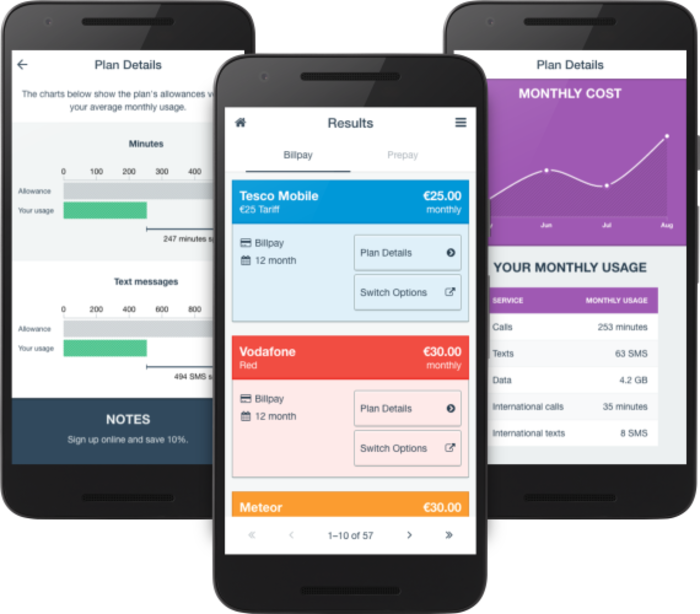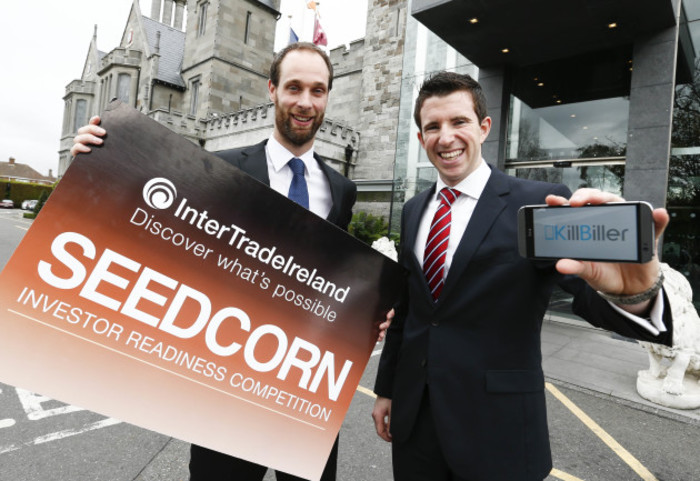'Tech startups looking for funding nowadays have little excuse for not having a working product'
After setting up his business in 2013, this founder talks about the lessons he learned while looking for funding and growing his company in Ireland.
BEFORE GETTING INVOLVED in the startup world, I had mainly an academic background in computer and control engineering.
I finished a PhD in Maynooth University and completed research in semiconductor manufacturing technologies, had a short stint in rocket propulsion development for spacecrafts and briefly worked with autonomous vehicles.
This was all before moving into the application of data analytics and machine learning techniques in business.
I was working as an analytics consultant until about two years ago when my colleagues Bart Lehane, Ciarán Tobin and I set up KillBiller – a mobile application and website that helps you work out the best mobile plan for you based on your usage.
We’ve since evolved the company into ‘EdgeTier’, working more and more in an advanced analysis and data product development space.
I have always been interested in technology and knew I’d end up starting some sort of company one day. I actually used to have a list that I’d keep of new business ideas and KillBiller was one of my favourites.
I first pitched the idea for the company at the Launch48 startup weekend in Dublin during 2013, but it was kind of by accident. The event was a startup weekend where teams are formed to create new business over 48 hours.
I had never been to a startup event before and I attended to learn how startups work and dabble in the business world, but they were actually looking for people to pitch ideas at the end so I got out my list.
I pitched the idea for KillBiller, got a great reaction from the crowd and we formed a team that weekend. The more people we talked to, the more it seemed like a good idea and made a lot of sense.
Bart, Ciarán and I were still in full-time employment, but took on building the first version of KillBiller as a hobby since we were interested in learning more programming and building mobile and web apps.
After an initial launch, some user traction and some exposure in the media, we managed to raise a small amount of angel investment and entered a startup accelerator programme. At this point, we took the leap to leave our jobs and go at it full time.

Go for funding when ready
When you hear about people first getting into startups, there’s an impression that the first step is to get their hands on funding to kickstart the business. In my experience, I’ve found that investors are rarely willing to throw money at ideas alone.
We’ve found that it doesn’t matter if you have a really great idea – if it’s not fleshed out, if there isn’t a solid plan and if you don’t have evidence to back up your claims, you won’t get investors’ attention for long. Revenue and growth of revenue is the real trump card when you’re looking for investment.
To be honest, there is little excuse for a technology startup not to have initial progress on a product, to have a proof of concept and probably even initial customers. Starting like this gives you information on market needs, customer acquisition costs and customer lifetime values, allowing you to really backup business plan claims and show investors what’s possible.
Venture capital firms, angel investors and government bodies don’t throw money about, they’re probably more risk averse or realistic than we thought originally, which makes sense because there is a lot of money at stake.
There’s also a lot of competition for their attention, so your pitch and business needs to stand out from the crowd. Put yourself in the shoes of an investor; they probably see four or five startups a day and will only invest in a handful per month. To stand out, you need to have a great story, a great plan and a great team.
The other side of the coin is that you also have the opportunity to bootstrap your company and grow the business without large investment by using your own revenues from sales.
I find more and more companies are taking this route and although growth is maybe slower, you don’t end up selling parts of your business – and ultimately your control – to investors.
Choosing your market
Originally KillBiller was very focused on the Irish market, but if I were starting over, we would definitely build something that is universally applicable. In the mobile space, there are only five million subscribers in Ireland, but in reality we’re only going to attract a small percentage of that.
However, just across the water in the UK, there are 83 million sim cards in circulation. The scale overseas is massive and looking back, we probably should have spent less time on Ireland and immediately tried to scale in Great Britain and beyond.
If you can, build something that can be used anywhere and don’t limit yourself to a single market or small population. Ireland can make a great testbed, but keep your options open and try to get international customers early.

Marketing challenges
I would say that we massively under-estimated the challenge of growing a free application. Being engineers, we were probably naive to the world of marketing.
I thought we would launch an app, it would be free, deliver instant value to consumers and in turn of course people will download it – in their millions. The reality is that customer acquisition cost is quite high, even for a free app and growth comes slowly with work.
Even though you may have a free app, marketing costs can be substantial if you want to be noticed in the media, found in the app store and appear on Google results.
It costs a huge amount to get to the forefront of people’s minds so you have to be clever with the media and really work on getting as much publicity as possible while keeping costs at startup level.
You’ll pay 20 cent for a Facebook ‘Like’, you’ll shell out more than a euro for a click on Google and you’ll also need to get the credit card out to print up leaflets.
If we were developing something new, I would be careful about the consumer offering and know what the expense of that would be. The big apps you see regularly in the top charts of app stores have huge marketing budgets, while startups have to rely on word of mouth and referrals.
Adventure
It’s been an amazing adventure to date, but thanks to those lessons we’re still around and the company has been operating well for a year and a half now.
We’re exploring new markets, building new technology with Edgetier and growing the business in new analytics and machine learning areas. Every day we get to explore new problems and learn new skills, which I find very exciting.
The main thing I’d say to a person looking to set up their own business is it never stops being exciting. There is a thrill to it and it never truly feels like work.
Shane Lynn is the co-founder of KillBiller and blogs on his own site shanelynn.ie. This article was written in conversation with Killian Woods as part of a series on business mistakes and what can be learned from them.
If you want to share your opinion, advice or story, email opinion@fora.ie.






